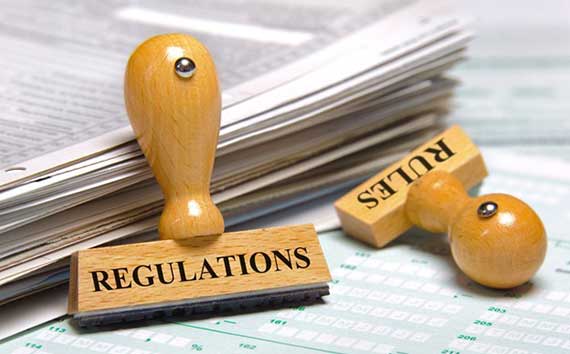A carbon market is — put simply — a marketplace where carbon credits or offsets are bought and sold to compensate for the carbon emissions an individual or organisation is responsible for. Carbon and other greenhouse gases are the main driver behind climate change. We have to reduce the amount of them in the atmosphere to avoid the worst effects of global warming and to reach net zero emissions by 2050.
This can be achieved through projects which draw carbon down from the atmosphere (or prevent it from entering it in the first place). These projects can then be packaged into ‘credits’, which can be traded by organisations in the carbon market.
We use the word ‘traded’ because if an organisation manages to mitigate its carbon footprint, it can then sell this mitigation onto other organisations in the form of carbon offsets, which can then be used by the organisation purchasing the offset to compensate for its own emissions.
What Are the 2 Types of Carbon Markets?
There are two kinds of carbon marketplace: the compliance market (also called the regulatory market) and the voluntary carbon market.
A compliance market is one where market participants are required by legislation to keep their emissions within a certain mandated allowance. They purchase carbon credits to remain within this allowance.
The compliance market almost exclusively applies to industries linked to high emissions, such as aviation. By placing a limit on the quantity of carbon emissions they can be responsible for, an airline is incentivised to do what they can to prevent carbon emissions in the first place. They then make up for unavoidable emissions through the purchase of carbon offsets.
The voluntary market, on the other hand, is where buyers choose to purchase and sell carbon offsets through their own volition in order to compensate for emissions.
The voluntary market is open to all organisations and individuals. They choose to set their own net zero strategies based on self-reported carbon inventories, as a means of demonstrating their commitment to fighting climate change.
Although technically the term ‘carbon credits’ should be used to refer to carbon traded in the compliance market and the phrase ‘carbon offsets’ should refer to carbon traded in the voluntary market, in practice the terms are used interchangeably.
What Are the Similarities and Differences Between the Two Markets?
The Paris Climate Agreement, perhaps the most significant international climate summit to date, set out how both compliance and voluntary carbon markets are essential to facilitate reductions in greenhouse gas emissions to combat climate change and reach net zero.
Additionally, the range of offset projects the two markets give access to is the same, including avoidance and removal projects, and man-made as well as natural offsets. There are arguments as to which projects are the most effective in the race to net zero. But as things stand, both markets are set up to support all forms of mitigation of carbon in the atmosphere.
The major difference is that the voluntary market is not regulated. For example, there is no set carbon price in the voluntary market. Rather, the purchasing price is established through the initial price set by whichever project produced the offset and then the pressures of supply and demand.
The compliance market, on the other hand, is subject to policy interventions that increase the price of a carbon credit to encourage organisations to reduce their emissions. Actors in the compliance market have to make use of legally binding carbon pricing schemes — most of which apply to the power and manufacturing sectors — such as the European Trading system (the largest carbon pricing scheme in the world).
There are no such restrictions in the voluntary market, and indeed, there are no binding requirements as to what constitutes a carbon offset in this market, nor on how these are accounted for. However, there are still standards within the market, as we will see below.
The voluntary market is also much smaller, although it’s growing. In 2021, the market size was set to overtake $1 billion for the first time. The compliance market, on the other hand, was already worth over $279 billion by 2020.
The two markets therefore play different roles within the economy and in the race to net zero. Put simply, because the voluntary market is unregulated and less developed, it arguably encourages greater innovation than the more restrictive compliance market. The voluntary market spins off innovations in project finance, monitoring, and methodologies that also ultimately influence regulatory market mechanisms.
On top of this, typically, voluntary offsets refer to an organisation’s decision to offset residual emissions, whereas the compliance market is focused more on cutting down unavoidable emissions related to an organisation’s core activities. For example, the Science Based Targets initiative, which helps businesses establish a path to net zero, outlines how offsets can be used as part of a decarbonisation strategy. However, this is ‘only after science-based goals covering the next five to ten years have been adopted and once groups have slashed 90% of their emissions’,’ according to IMG.
How Does The Voluntary Market Spur Change in the Compliance Market?
The innovation associated with the voluntary market, as well its ability to drive up standards throughout both kinds of carbon market, are the most common arguments used to underline the voluntary market’s importance. Firstly, many organisations are currently not mandated to remain within a certain carbon allowance because the compliance market is currently restricted to high-emissions industries such as fossil fuel and heavy industry.
Secondly, there are certain types of emissions that an organisation does not currently have to report on. These unreported emissions are generally Scope 3 emissions — i.e., all of the emissions indirectly related to an organisation’s activities, such as those produced along supply chains. This is opposed to Scope 1 and 2 emissions, which are those emitted directly by an organisation through their business practices and those emitted as a result of the activities which support these business practices, such as heating an office space.
This is a good example of the voluntary market creating innovations that are used within the compliance market. The terms originated from the Greenhouse Gas Protocol in 2001, a nongovernmental body, and arose out of the need to highlight the different levels of emissions that organisations are responsible for. This makes carbon accounting much easier, which in turn drives transparency and creates a greater incentive to reduce emissions.
So while compliance markets don’t currently mandate reporting on Scope 3 emissions, no voluntary scheme will be able to gain meaningful accreditation without doing so.
This highlights again how, thanks to innovation, ‘the voluntary carbon market has spawned its own standards, registries, and project types beyond the scope of existing compliance market mechanisms’, as outlined by Ecosystem Marketplace. These then end up influencing and often improving standards and practices in the compliance market.
In other words, despite not being officially mandated, the voluntary carbon market can actually hold organisations to higher standards. It’s just that organisations have a choice of which scheme they want to participate in.
The hope, of course, is that the market will ultimately incentivise adopting the highest quality standards, since this is the only way organisations can ensure a reputation for being genuinely committed to sustainability.
The downside is that, because of this greater flexibility, it is much easier for organisations to exploit the voluntary carbon market for ‘greenwashing’ — falsely presenting their carbon reduction credentials when in fact the projects they support fail to reduce the carbon in the air.
Are Voluntary Carbon Markets Regulated — and by Whom?
 source
source
The voluntary carbon market is, by definition, not regulated. However, precisely for this reason, there are multiple frameworks and auditing bodies that have emerged for assessing the quality of an offset. These frameworks in turn have an influence on compliance regulation.
The SBTi (Science Based Targets initiative) is the global green standard when it comes to measuring an organisation’s progress towards net zero and beyond. It helps businesses set clear, actionable, and effective carbon reduction strategies. Another civil society initiative, the Voluntary Carbon Markets Integrity Initiative (VCMI), develops guidance and aims to improve accessibility for purchasing high integrity offsets in consultation with organisations, businesses, NGOs, and indigenous groups.
While these initiatives establish how offsets should fit into a decarbonisation strategy, there is also a need to define the principles which offsets must adhere to. This results in greater clarity around what constitutes a worthwhile offset and helps to push the market towards higher standards.
The Taskforce on Scaling Voluntary Carbon Markets (TSVCM), fronted by former Bank of England Governor Mark Carney, defines five core carbon principles: ‘additionality, permanence, exclusive claim, overestimation and the provision of additional co-benefits in line with the UN’s Sustainable Development Goals.’
These principles are then adapted for use by certification bodies in order to hold offsetting projects to high, consistent standards. Of course, none of these certification frameworks is perfect, and they may still result in double counting and a failure to ensure additionality.
Perhaps the most widely adopted certification is REDD+, a framework established by the U.N. which outlines best practices for carbon offsets in the forestry sector. (A forest produces carbon credits because it holds carbon in the ground as well as drawing it out of the atmosphere).
Although participation in the framework is voluntary, 90% of rainforests worldwide and the associated NGOs use it to ensure the quality of the offsets those forests are responsible for. Buyers will often look for REDD+ certification before purchasing nature-based offsets because it is a reliable, established standard, which is a good example of how demand can assure high quality offsets.
The most established frameworks that apply more broadly across all types of carbon offsets are the Gold Standard and Verra, which hold offsetting projects to high standards around accounting, auditing and transparency.
Do the Voluntary Carbon and the Compliance Markets Overlap?
The two markets play different roles as we have seen, but that is not to say they do not interact. For example, ‘pre-compliance buyers’ may speculatively purchase carbon offsets in the voluntary market in anticipation of what carbon allowance they will be allowed, on the basis that the voluntary market offers cheaper offsets than the compliance market. An airline may predict a change in regulation that will require it to offset more emissions than previously and so may purchase a ‘compliance grade’ voluntary offset in anticipation of this.
Offsets bought in one market can be traded on the other. For that reason especially, the need for the establishment of rigorous guidelines and cross-market criteria is essential.
This was a major bone of contention at COP26, the latest international climate summit, where a proposed solution was only ironed out in the very final hours. Since the Kyoto Protocol was set out in 1992, where initial proposals for capping nations’ emissions and carbon reporting were set, there has been an international market for trading carbon.
This led to the establishment of nationally determined contributions (NDCs), a maximum allowance for emissions set by all signatories to the Paris Agreement. Such restrictions are essential in the race to net zero. However, because they are set by countries themselves and because these agreements are nonbinding, legally speaking, there is a vital need to establish a high quality carbon market that incentivises genuine attempts at carbon reduction.
COP22 (where the Paris Agreement was written up) attempted to establish clear guidelines on how carbon could be traded. However, because of a lack of internationally binding legislation, poor transparency, and a general lack of cooperation, it failed to have the effect it was designed to.
COP26 aimed to address this through, as defined by ING, establishing a more rigorous ‘accounting framework for international cooperation, such as linking the Emissions Trading Systems of two or more countries’ and establishing ‘a centralised U.N. mechanism to certify tradable credits from emissions reductions generated through offset projects.’
Crucially, under the new terms of the agreement, a carbon credit may only be counted towards a country’s NDC once. That is, once one country has sold an offset, it cannot then report this as an offset on its carbon inventory.
In the past, a huge problem with carbon offsets has been that they can be ‘double-counted’. That is when both the country where the offset is produced and the country where it is bought claim the offset against their carbon balances.
The new agreement is a vital step to ensuring the offset market as a whole creates meaningful reductions in carbon, rather than simply creating a subsidiary financial market where carbon is seen as nothing more than another form of capital to be traded for profit.
However, it still leaves space for token and ultimately unhelpful behaviour in organisations, as the legally binding certification does not extend to voluntary markets.
What Is the Best Carbon Market?
There is a general belief that we need both kinds of markets due to the greater flexibility and dynamism of the voluntary market, which in turn can create innovation and improved standards in the compliance market. This is based on the notion that when left to their own devices, organisations will find the most efficient way to meet market demand.
Of course, it’s not totally clear that innovation is dependent on deregulated markets. Instead, innovation could come through state investment and incentivisation through legally binding caps on all emissions, for example.
Certainly, as things stand, voluntary markets are an absolutely essential tool for organisations and individuals outside compliance markets to offset emissions and to encourage proactivity in organisations going above and beyond to offset their own emissions and more.
What Is the Future for Voluntary Carbon Markets?
As in any section of the economy, as the market grows, the need for tighter regulation will increase. Some reports suggest the voluntary carbon market will scale up by as much as 100 times by 2050, making it a $100 billion market.
One aspect of regulation that will have to be introduced to ensure the effectiveness of the market is an international carbon price on the removal of a tonne of carbon dioxide (and other greenhouse gases). When the price of an offset is set purely by market demand, an offset may be sold at a price far cheaper than what the emitting organisation can earn by producing the corresponding amount of carbon.
An airline can sell tickets on its flights, leading to carbon emissions, and then offset them at a fraction of the price through purchasing offsets in a country where it is cheap to plant trees, for example.
There is an example of a Chinese company spending $5 million on an energy-producing incinerator, which then created $500 million profit in the form of carbon credits. The concern is that when carbon offsetting becomes so profitable, it ceases to be about reducing the carbon in the atmosphere and becomes blindly focused on profit.
Carbon offsetting can only work as a viable path to net zero if organisations are incentivised not to release carbon in the first place. At the moment, it’s generally accepted that carbon prices set by the market are too low. And that will have to change.
In order to incentivise organisations to avoid producing carbon in the first place, the price should be between $30-$100 per tonne of carbon, whereas current prices average out around $3-$6. Even if a price is not made legally binding, governments can incentivise price changes through the imposition of financial mechanisms like a carbon tax.
We may also see changes in what can be technically classed as an offset on an organisation’s carbon inventory. There is an argument that, due to the urgency of the race to net zero, only removals — where carbon is actively drawn out of the atmosphere — should count as offsets, as opposed to schemes which simply prevent carbon reaching the atmosphere in the first place. This would mean something such as a renewable energy project could not be counted as an offset since, while preventing the burning of fossil fuels for the production of energy, it does not actually draw any carbon down from the atmosphere.
Thanks to the new guidance set out in COP26, there is also likely to be an increase in trade between governments to reach NDCs, creating further growth within the voluntary and compliance markets, and further necessitating the need for tighter regulation.
A global mandate, with caps and targets extending to all organisations, is perhaps unlikely, though. Any one country will always be reluctant to impose blanket caps and targets on emissions because this will dissuade other countries from trading with them. Restrictions around carbon emissions drive up costs for businesses operating in that area, pushing trade to other nations with less strict regulation.
At the very least, then, there needs to be a reliable, centralised platform used by all participants in the market, across both the compliance and voluntary sector. Such a platform could assure proper standards are upheld as a condition of trading on the market through having clear mechanisms for tracking any offsetting claims relating to a credit from when it was first created.
Ultimately, then, the size of the voluntary market will continue to grow, while reporting on emissions will likely continue to come down to the integrity of an organisation, as influenced by the standards dictated by consumer demand and pressure from shareholders.
What Does This Mean for Me?
As individuals, and as members of larger organisations, it’s important to do our part in offsetting emissions. However, it’s vital that the quality of these offsets is assured before purchasing them, so that they really do compensate for the carbon they claim to.
As much as possible, it’s important when purchasing offsets to look out for evidence of high quality certification by official bodies, as otherwise the offset may do the opposite of achieving its stated aims.
If you want to offset your carbon footprint, rest assured that Terrapass certifies all of its projects using the highest integrity standards.
Brought to you by terrapass.com
Featured image:













